
One of the biggest pain points for working professionals is the lack of transparency on salary. LinkedIn Salary was meant to help both job seekers and working professionals get a better view on how much they should be paid.
I was the lead designer for this project. I worked closely with my product counterpart and engineering team to come up with strategy, concept, wireframes, research and full visual designs for this product for desktop and mobile.
Because this product is so data heavy, my first priority was collecting data from our members. We started emailing our most engaged users with popular titles, and slowly opened up to more and more titles asking basic salary stats such as base salary, additional compensation, and years of experience. In one year, we were able to collect 1 million data points across United States, Canada, and United Kingdom, and 2 years later, we’re at over 3 million data points which gave us the ability to create a full on salary product.

Detailed collection flow with entry points and checkpoints.

Collection flow asking position, base salary, additional compensation, and years of experience.
We knew that when we started this product, we would have a wide range of professionals who would be able to use this information. Students who would be looking for what career they should pursue, job seekers would be looking into what jobs pay well, mid level career professionals would want to see if they're being paid fairly, and job posters would want to understand the landscape of where salary is for the roles they're posting. I sought out to design comprehensive insights for all our members.
We explored insights that we could potentially show our members, and how we can portray our data. We tested out different mocks with our members, and worked with our data science team and engineers to come up with the final set of data that we are actually able to build based on the data we’ve collected.
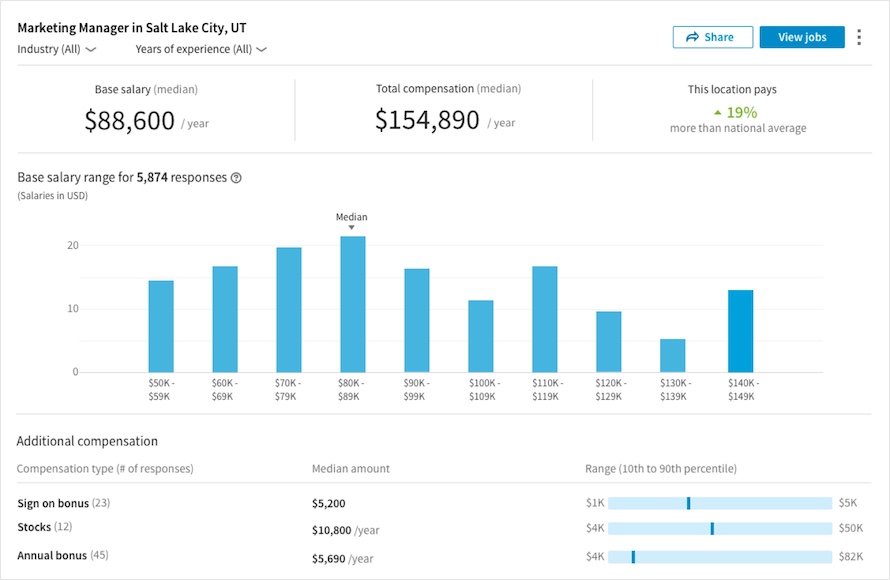
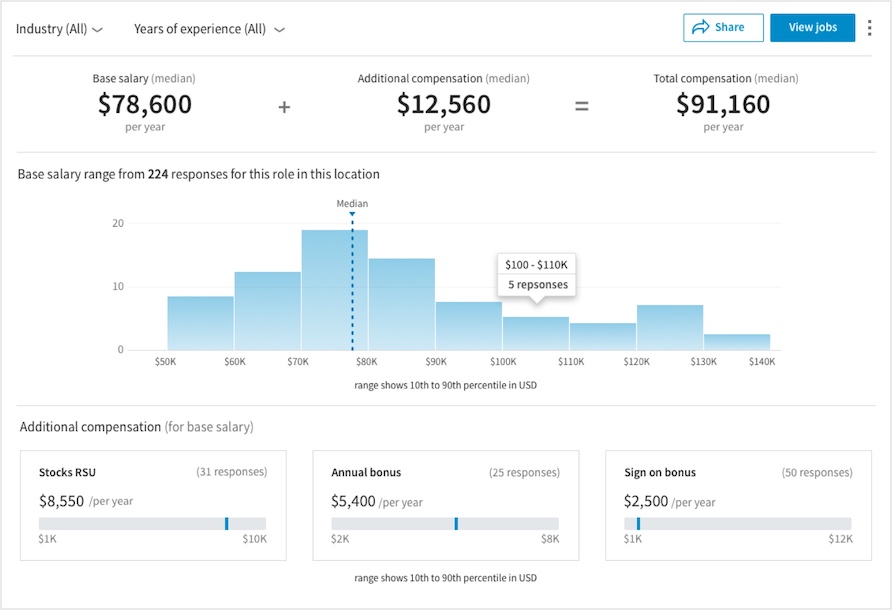
Early explorations on data visualizations.
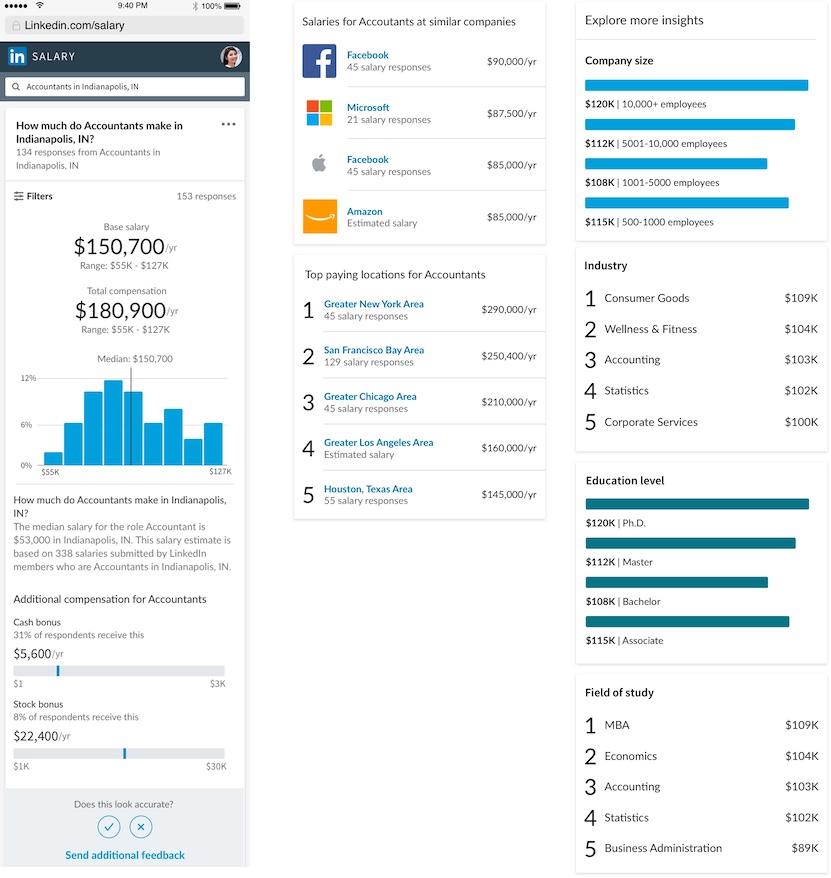
Final set of data for a company/title/region page.
Salary has and will be, for many, a sensitive topic, not only to job seekers and professionals, but also to recruiters and hiring managers. In order to understand how both sides would use and react to salary, we conducted research to understand the needs of users as well as the concerns coming from recruiters and hiring managers. We showed both job seekers and job posters salary on job pages to understand how they felt about seeing the data, which guided us in developing this product.
"Salary is a reflection of the value I bring to a company. I want to make an impact. I want to help companies innovate and grow. Salary is a reflection of that. If the job doesn't pay much, then is my role really bringing a lot of value?"
- LinkedIn Job Seeker

Variations of designs we tested with both job seekers and job posters.
We tested out a few variations to get reaction from job seeker and job posters to understand their reaction to seeing salary data on job postings. We learned that the more clear the title the better for both groups, making sure estimated and provided by employer was very important, and people perceived the histogram as more truthful, and as having data behind the numbers.
For recruiters and hiring managers, showing salary was a sensitive topic. I worked closely with our LinkedIn Recruiter team to understand concerns from their customers side.
Rather than posting salary as base and total compensation, often times they'd consider ranges of salary for their prospective employees, which also gives employers some wiggle room in terms of final compensation. I worked with our Recruiter team designers to create a customized salary posting flow and made sure that the salary data that gets shown on the jobs detail page was very clear to our members whether it came from LinkedIn or from a job poster.
"This [having salary info on a job post] is something that would be very beneficial for the employer and employee to ensure that there's a potential match"
- LinkedIn job poster
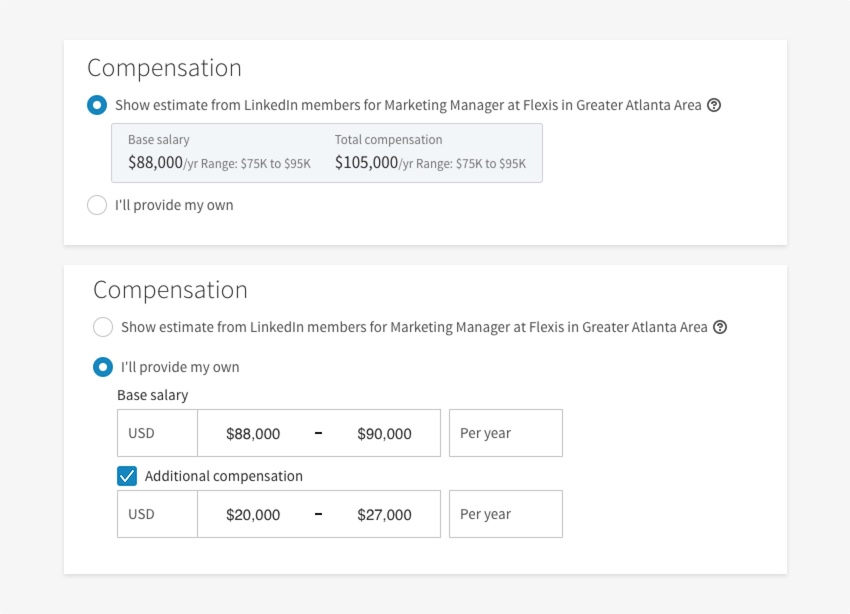
In the job posting flow, job posters have the option of using LinkedIn provided data or provide their own.
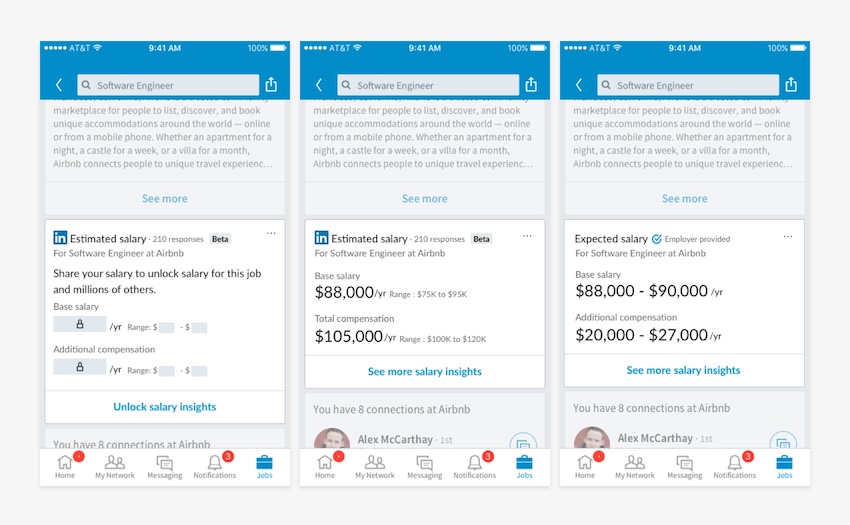
In the final variation, we simplified the designs and made it clear to show estimated by LinkedIn vs provided by employers. We also show median salary for estimated vs ranges for provided by employer salaries.
Having a great set of data is awesome, but being able to apply it in context makes all the difference. Knowing that we now have a robust system, I worked closely with my Product Manager to strategize how we can integrate our powerful salary data into other LinkedIn products. I partnered closely with other teams across the company including the recruiter team, profile and notifications team, jobs page teams, as well as search team to ingrate salary data across their lines of product. We also started partnering with Google Jobs and allowing them to pull from our data. Presenting valuable insights for our members when they needed it, would be the ultimate goal.
Live product: linkedin.com/salary

Integrating salary entry point on profile, and salary notifications in LInkedIn notifications.

LInkedIn salary information being used in Google Jobs product.
